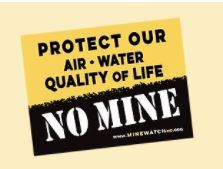 A recent study by scientists at the University of Arizona finds that a much higher percentage of indoor house dust than previously suspected originates outdoors, from a variety of sources including “metals associated with mining operations.”
A recent study by scientists at the University of Arizona finds that a much higher percentage of indoor house dust than previously suspected originates outdoors, from a variety of sources including “metals associated with mining operations.”
After entering a residence, inorganic substances present in soil and airborne particles become incorporated into household dusts, which serve as a primary reservoir for such substances … Young children can have elevated contaminant exposures because they exhibit behaviors that increase indirect ingestion by way of hand-to-mouth activities and mouthing of various dust-contaminated objects, and ingest dust at rates that are greater than adults on a body-weight basis … For contaminants such as As [arsenic] and Pb [lead] indirect ingestion often constitutes the principal exposure mechanism for children … and therefore health-risk assessments need to address transport mechanisms that bring contaminants indoors as well as the factors that influence contaminant concentrations on contact surfaces indoors.
This contaminant vector, as a significant source of indoor air pollution, would have to be included in any future reworking of the DEIR as part of Emgold’s application to re-open the Idaho-Maryland Mine.
The following toxic assessment of the Idaho-Maryland Mine site by the California Department of Toxic Substances Control gives a vivid picture of the sort of poisons Nevada County toddlers could be ingesting as they chew on their Lincoln Logs and Tinker Toys:
Since 1956 the site has remained dormant however, the Idaho-Maryland Mine Corporation is currently seeking to re-open the mine. Based upon information that was included in the agreement application, mining waste rock and mine tailings are present throughout much of the property. Results of sampling that has been completed to date indicates that the soil at the site contains lead, arsenic, nickel, and mercury at maximum concentrations of 35,111 milligrams per kilogram (mg/kg), 3010 mg/kg, 2100 mg/kg, and 41 mg/kg, respectively. These concentrations are above background and California hazardous waste levels.

